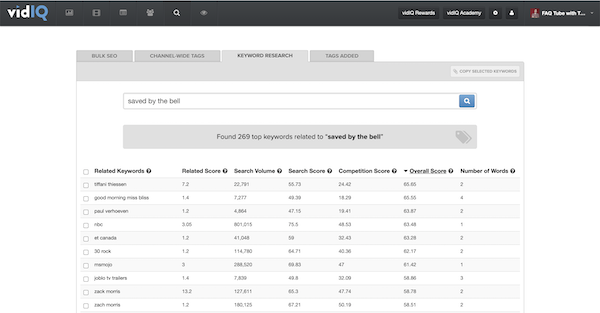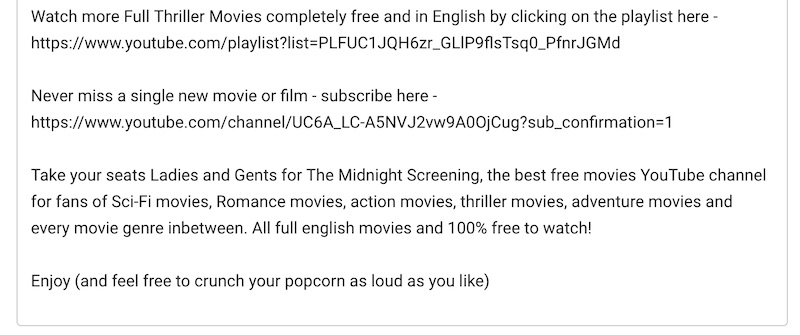Want to know exactly the jobs and task that a Pro channel manager has to carry out when hired to run a channel? Need to hire someone but struggling what to look for? I've been a professional YouTube channel manager since 2012, and after working for major clients like BBC Studios, I have a ton of knowledge I’m eager to share.
This blog post will cover the eight key tasks of a professional YouTube channel manager. It offers an overview of what the work of a YouTube channel manager job actually entails.
Keep reading if you’re already working in professional channel management or you’re interested in starting a career in channel management, or if you’re a YouTuber looking to hire a manager for your channel, you’ll find some nuggets in here as well.
I’ve managed all sorts of channels in various environments — but no matter who I’ve worked for — the basic principles of the job tend to remain the same.
Resources Mentioned In This Episode
Join the new generation of Channel Managers learning their trade in the Pro Channel Manager Academy
The YouTube easter egg from the start of today's episode is this little gem.
The Pro Channel Manager Academy is our incredible community full of incredible video courses and some of YouTube greatest minds to help you grow the YouTube channels you are working on.
A HUMUNGOUS thank you to our incredible sponsor and my favourite YouTube tool vidIQ. I use it on every single video I upload and has helped me generate BILLIONS of YouTube views. Get a free trial of one of their incredible paid plans by clicking here.
Set Yourself Up For YouTube Success, Onboard First
1) Audit
I have a custom 75-point checklist for audits that covers four main areas to bring the channel up to scratch — whether that's changing a few settings here and there or overhauling the entire channel strategy.
After you’ve evaluated all aspects of the channel, you’ll know which of the following areas need improvement for the channel to follow best practices 100% of the time:
✅ Channel tone and channel identity
✅ Channel upload strategy
✅ SEO and metadata
✅ Content
✅ Bonus: Operational and monetization settings
2) YouTube Keyword Research
This is an area that I've worked hard on developing over the last few years. It’s also something most YouTube experts probably aren’t even thinking of, and the ones who are probably aren’t doing it the way they should be.
I have a flagship course based on keyword research, which details the keyword research process. But in its most basic essence, keyword research is finding out what people are searching for related to your channel/niche. This helps find not only what people are searching for, but the exact language they use when searching and the level of competition around those topics.
Once you know that, you can set your titles, tags and descriptions based on the research that you've compiled.

3) Benchmark YouTube Analytics
You’ll never be able to show what you’ve achieved while managing a channel if you don’t know the state of the channel before you started working on it. So, if you want to be able to report back to stakeholders with solid performance data, benchmark key analytical data such as:
👉 Average monthly views
👉 Average monthly subscribers
👉 Average view duration
👉 Average view percentage
👉 Monthly revenue
Ok, we're onboarded and ready to go - what does the day to day look like?
8 Key Tasks of a YouTube Channel Manager
1) The Physical Upload
As simple as it sounds, there are several components to this, especially if you’re working for a big media company. Many clients have their channel inside of a content management system, which means you need to set up a few extra settings before publishing a video, such as:
a) Usage policy — Are you going to monetize?
b) Match policy — What do you do when someone uploads a copy of your video?
c) Custom policies — Are you going to have videos blocked in certain countries?

2) Crafting Video Titles
This is where your keyword research comes into play. Your titles need to fit into your niche, and to do that, I use a three-layered system on which to build all the metadata:
d) Channel level — This is the broadest level of metadata, which means it’s applicable to every video on the channel. This is almost always going to be the name of the channel, which we put at the end of our title.
e) Category/subtopic level — Is the video a news story, review, unboxing, etc.? We can just copy and paste this into the middle of the title.
f) Video-specific level — What is specific to this video only? Craft a clickable hook that’s also applicable and place that at the start of the YouTube title.
*Pro tip: Copywriting skills are vital in the field of YouTube channel management. If you can’t write engaging copy that will get plenty of clicks, you won’t be successful.
3) Writing Descriptions
Like the titles I recommend a three-layered approach for writing YouTube descriptions.
Please bear in mind when crafting any copy that this all must be well-written for both humans and the YouTube algorithm. Copywriting is key!
Also remember — Your keywords should be up top, and you should include a description of the actual video in a short synopsis. You never want to put links "above the fold."
Here’s the three-part strategy for writing descriptions:
g) Video-specific synopsis — This goes at the top and is where the real copywriting comes in. It might be something like: If you have a problem with someone trolling your YouTube channel, follow this video to show you how to hide their comments and block them from commenting on your future YouTube videos.
h) Category mention — Add something to do with the category, such as: For more [category name] videos, click here for the playlist.
i) Upload defaults — This is where you include your subscribe or website links. Plus you want to include a keyword-rich “blurb” about the channel.
*Pro tip: Curation is key for YouTube channel managers, and descriptions are a great place to curate your other videos, so link to previous videos and playlists the channel has published whenever possible.

4) Adding YouTube Tags
You might not think they’re relevant, but they are. There’s evidence that they work, and if anything, you’d rather take an extra step to do something that has a chance of helping rather than not doing it and getting penalised.
Tools like vidIQ make this step easy with automatic suggestions, and if done right, it could take less than five minutes, especially seeing as we already have most of our defaults based on our previous keyword research.
I simply log into vidIQ, go to the keyword tool, find some video-specific tags and just throw them in the bottom of the tag box.
Yes, it can be that simple!
5) Creating The Thumbnail
How much involvement you have in this step will totally depend on who your client is, how much experience you have with design and what resources you have at your fingertips, but every channel manager should give some input on what colors, fonts, etc. to use to make sure you’re getting the best click-through rate possible.
You may also just be providing tips to a designer or third party service to get the best clcik through rates possible.
6) Optimizing For Monetization
To start with, you need to know that channel managers are responsible for ensuring the correct ad formats are enabled — that mid rolls are enabled and optimized for positioning — and that ads are being optimized to bring in as much revenue as possible.
Ultimiately it's this revenue that will be paying your wages so you need to make sure this is high on your priority list.

7) YouTube Analytics Reporting
As a channel manager it’s imperative that you know how to navigate YouTube analytics data in order to present a monthly or even weekly report to the client. Typically, the most important things to know are which videos (and types of videos) are driving the most growth and revenue.
*Pro tip: You’ll likely have to formally present this kind of data at least a few times during your career, so it’s important to know your way around Microsoft Excel and PowerPoint, or at least the Google equivalents, and polish up on your public presentation skills too.
8) YouTube Analytics Reporting
This can be tricky, but you have to be honest.
It’s not your job to worry about hurting a creator’s feelings, it’s your job to help videos be as successful as possible. Offer feedback in areas such as audio visual quality, tone, and interactivity in terms of cards and end screen.
It’s also helpful to suggest strategy changes such as changing the upload schedule, upload frequency, length, etc.
To Sum it All Up...
Listen, being a professional YouTube channel manager is not easy or simple, but if you follow these guidelines, stay organized and above all, remain professional, you will set yourself up to do well in this industry. (And yes, being professional includes basic meeting etiquette such as being on time, engaged and respectful.)
Help the channel grow and you make yourself indispensible
Never miss a single episode of the podcast and be the first to hear about our new courses and community updates designed for YouTube professionals
